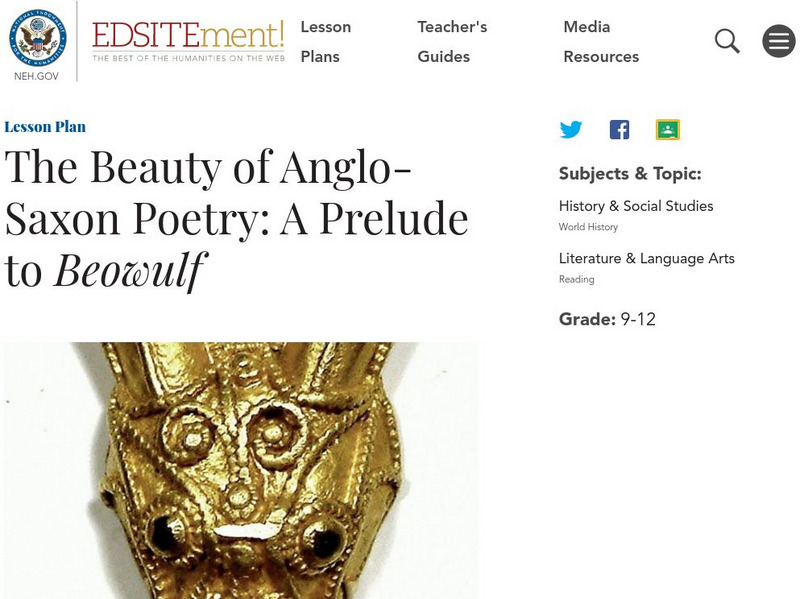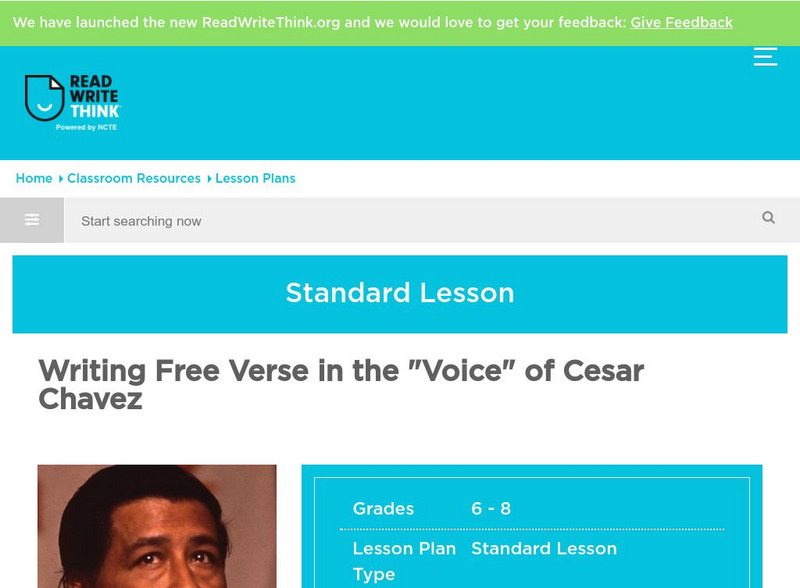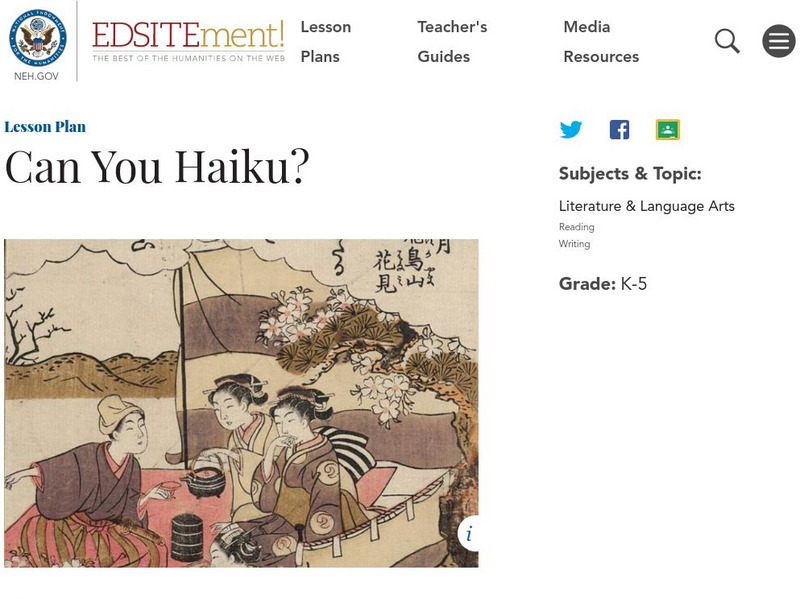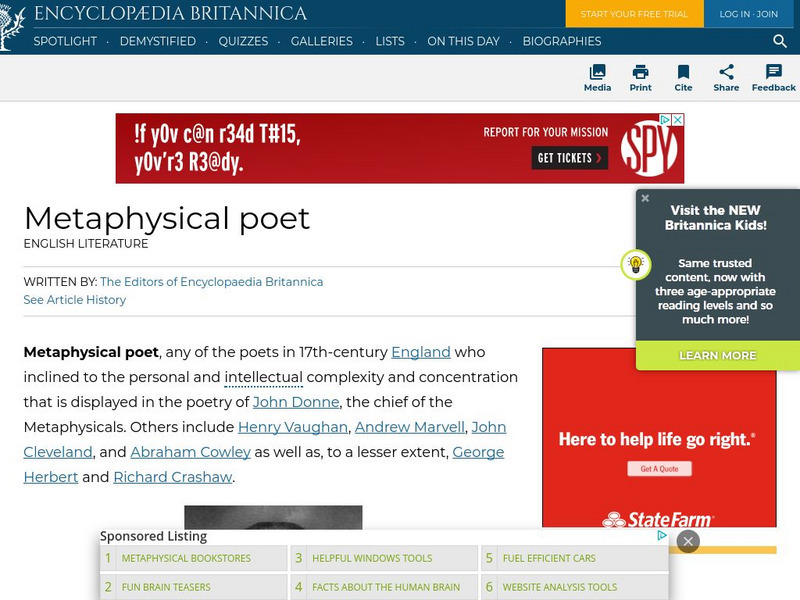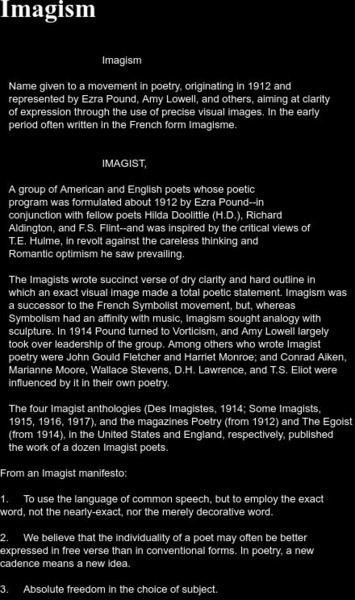ReadWriteThink
Read Write Think: What Makes Poetry? Exploring Line Breaks
This lesson explains how analyzing poetry is a many-layered process. This lesson introduces the special characteristics of poetry and leads young scholars through a look at how poems are structured and why. Includes links to poems and...
PBS
Pbs: Transcending Poetry, Jazz, Rap & Hip Hop
The objectives in this lesson plan will have students describing the characteristics of poetry, jazz, rap and hip hop music. Students will also analyze how poetry, jazz, hip hop and poetry reflect the culture of the time.
Other
Anglo Saxon Period: Characteristics of Poetry
This concise survey of Anglo-Saxon poetry is part of a larger site in English for Chinese university students.
Library of Congress
Loc: Poetry 180: A New Poet
This six-stanza poem describes the characteristics of a new poet.
Library of Congress
Loc: Poetry 180: The Poet
This three-stanza gives non-complimentary characteristics about a poet.
TED Talks
Ted: Ted Ed: What Makes a Poem a Poem?
Melissa Kovacs shares three recognizable characteristics of most poetry.
Library of Congress
Loc: Poetry 180: Machines
This poem describes the characteristics of an effective machine.
Alabama Learning Exchange
Alex: Native American Acrostic Poems
In this lesson, students will synthesize the knowledge they have acquired about early Native American tribes by creating and presenting an acrostic poem that incorporates pictures symbolizing important characteristics of the tribes. In...
Other
Fu Jen University: Metaphysical Poetry
This article by Dr. Marguerite Connor focuses on metaphysical poetry and the metaphysical poets. It includes a definition, the characteristics, a discussion of metaphycial poets and poetry, Neo-Platonism, platonic love, and T.S. Eliot's...
Bartleby
Bartleby.com: Poetry of the West
This entry, from the Cambridge History of English and American Literature, provides a description of the poetry written in the second half of the nineteenth century by poets of the American West, namely Bret Harte. It examines common...
Can Teach
Can Teach: How to Write an "I Am" Poem
This is a template for "I Am" poetry. Pupils will focus on their own characteristics as they create an autobiographical poem.
ClassFlow
Class Flow: Diamond Poem
[Free Registration/Login Required] This flipchart describes the structure and composition of a Diamond Poem. After studying the characteristics of a poem, students have the opportunity to construct one of their own.
Georgia Department of Education
Ga Virtual Learning: Contemporary Literature: The Modern Poet
This is an introduction to a modern poetry unit; it features links to poetry and technology standards and a list of key terms. The essential questions for the unit focuses on the characteristics of contemporary poetry, how poets use...
Texas Education Agency
Texas Gateway: Poetic Forms
[Accessible by TX Educators. Free Registration/Login Required] Learn how to compare and contrast the relationship between the purpose and characteristics of different poetic forms: epic poetry and lyric poetry.
Scholastic
Scholastic: Noun Poem Reproducible [Pdf]
A three page pdf includes notes for the teacher and reproducible pages for students. A poem to help students identify nouns and a fun "Mad Lib" type exercise are included.
National Endowment for the Humanities
Neh: Edsit Ement: A Prelude to Beowulf
Before reading the Anglo-Saxon epic poem, "Beowulf," students should explore the Dark Ages through researching the fundamental characteristics of the art and literature produced during this period. This website provides links for doing...
ReadWriteThink
Read Write Think: Writing Free Verse
This online lesson plan allows middle schoolers to learn about the characteristics of free verse poetry and to model their poems after the activist Cesar Chavez.
National Endowment for the Humanities
Neh: Edsit Ement: Can You Haiku?
Informative lesson for students concerning the writers, descriptions, and characteristics of the haiku. Also allows students to create their own original haiku.
Encyclopedia Britannica
Encyclopedia Britannica: Metaphysical Poet
This is an encyclopedia artical about the 17th century metaphysical poets: John Donne, Henry Vaughan, Andrew Marvell, John Cleveland, Abraham Cowley, George Herbert and Richard Crashaw. It offers links to more informatation about each of...
Georgia Department of Education
Ga Virtual Learning: Anglo Saxon Literature
This lesson focuses on Anglo-Saxon Literature including the importance of the monks who listened to the stories and poems and wrote them down and the two nonfiction pieces that had an impact on creation of the written language: The...
Georgia Department of Education
Ga Virtual Learning: The Middle Ages: Introduction
This is an introduction to a unit on the literature of the Middle Ages. It focuses on two essential questions of study: "How is the poetry of the middle ages characteristic of the culture? and How did the English Language change during...
Environmental Education for Kids
Eek!: Teacher Resources: Air, Air, Everywhere Teacher's Activity Guide
This teaching guide includes 10 hands-on activities to teach about air quality and the importance of keeping our air clean. Students will complete activities that include simple sensory experiments to discover the characteristics of air,...
Can Teach
Can Teach: Writing a Bio Poem
This site describes how a Bio poem can be used to teach young scholars to focus on the characteristics of a person or an animal, anything or anyone really. It requires the student to put themselves in the subject's shoes. Lesson plan...
University of Pennsylvania
Univ of Pennsylvania: Imagism
Defines the movement of poetry, "imagism" and describes the "imagist." The site also gives five characteristics of an imagist according to an Imagist manifesto.
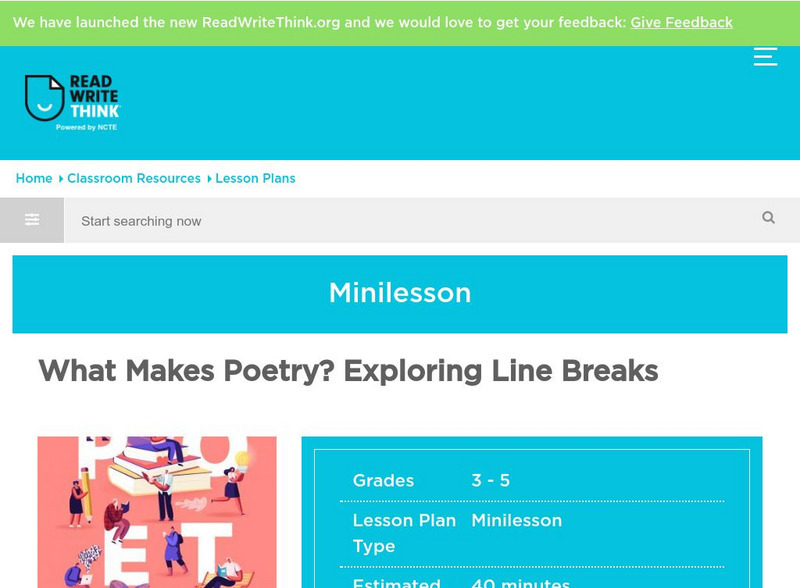








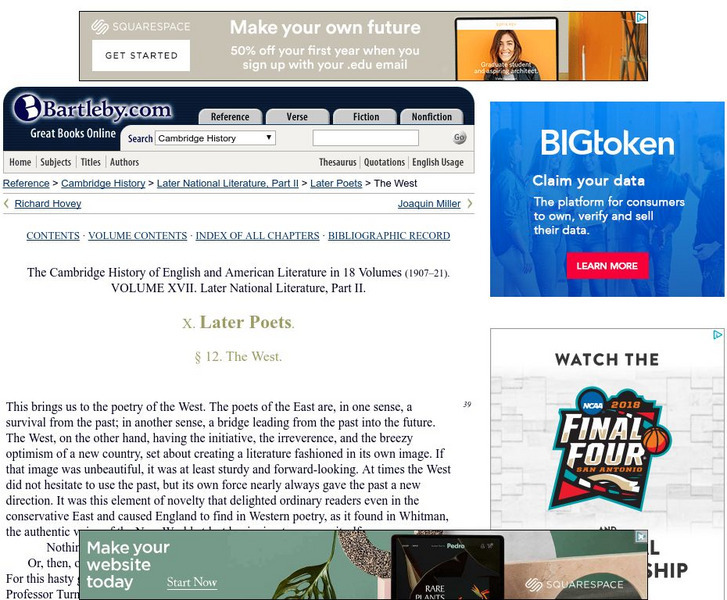
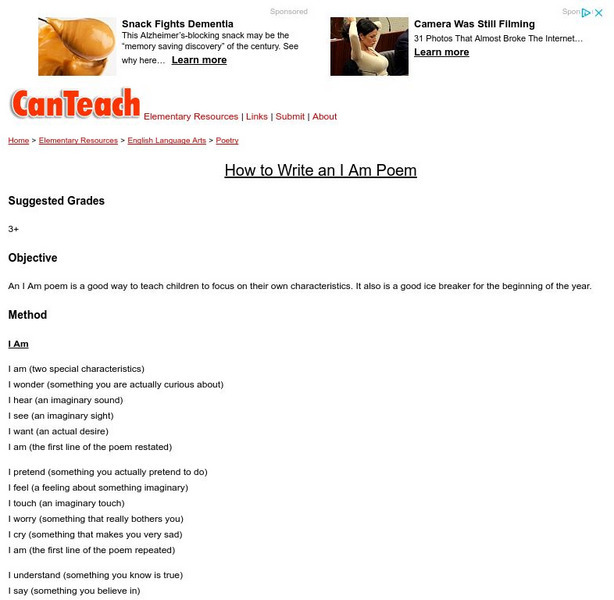



![Scholastic: Noun Poem Reproducible [Pdf] Activity Scholastic: Noun Poem Reproducible [Pdf] Activity](https://content.lessonplanet.com/knovation/original/497136-fa06424f6717b422c58d4fa1cd088b3d.jpg?1661408214)
